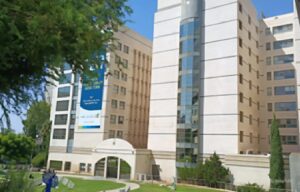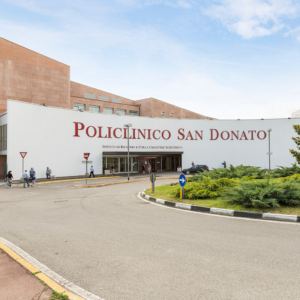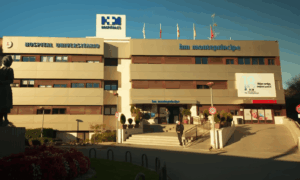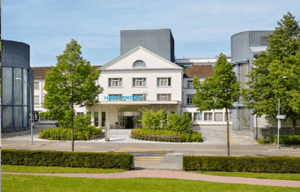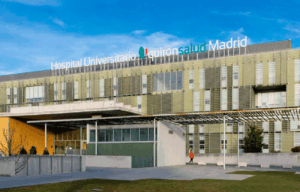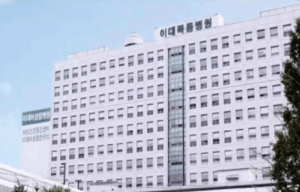Rheumatoid arthritis
Disease description
Rheumatoid arthritis is a chronic autoimmune disease in which the immune system begins to attack the body’s own joints, causing inflammation, pain, and gradual destruction. The disease affects not only the joints but may also impact internal organs.
Rheumatoid arthritis is more common in women, especially between the ages of 55 and 60. The disease progresses gradually, beginning with the small joints of the hands and feet (such as the wrists). As it develops, inflammation may affect larger joints: knees, elbows, and shoulders.
Symptoms of rheumatoid arthritis
- Unexplained joint pain: the main symptom, especially if it worsens at night or upon waking.
- A feeling of stiffness in the joints, more often in the morning, which may last for about an hour.
- Fatigue and muscle weakness: increased tiredness, even without intense physical exertion.
- Swelling, puffiness, and redness in the joint area.
- Unusual symptoms of arthritis in adults — numbness of limbs, shortness of breath, dry mouth, sensitivity to light.
Without proper treatment, deformation of the joints in the hands and fingers may occur. Fingers begin to curve, acquiring a characteristic shape resembling a “swan neck.” The pain becomes unbearable, and performing simple self-care tasks becomes nearly impossible. Therefore, when stiffness and increasing joint pain appear, it is not enough to rely on painkillers — it is important to consult a rheumatologist. Leading clinics around the world have developed effective treatment methods for rheumatoid arthritis that can stop the progression of the disease and restore joint mobility.
Methods of diagnosis and treatment of rheumatoid arthritis
Diagnosis
An experienced physician often needs only to perform an examination and listen to the patient’s complaints to suspect rheumatoid arthritis. However, accurate diagnosis requires several additional tests.
The core of the diagnostic process involves blood tests. These focus on indicators such as erythrocyte sedimentation rate (esr), level of rheumatoid factor, concentration of c-reactive protein (crp), and antibodies to cyclic citrullinated peptide (anti-ccp). These markers help detect inflammation and confirm the autoimmune nature of the disease.
Imaging methods: radiography and ultrasound allow for an assessment of joint condition. In some cases, magnetic resonance imaging (mri) and computed tomography (ct) may be required for a more detailed evaluation of damage. Additionally, the doctor may prescribe arthroscopy or synovial fluid analysis to clarify the diagnosis and determine the disease stage.
Treatment
Treatment of rheumatoid arthritis begins with the selection of nonsteroidal anti-inflammatory drugs, which help reduce inflammation and alleviate pain. In cases of active joint inflammation, glucocorticoid injections may be used. If there are no contraindications, plasmapheresis — blood purification — is possible. Next, baseline drugs with a cumulative effect (such as cytostatics) are added and must be taken for at least six months. In complex cases, targeted therapy is prescribed to suppress the autoimmune process.
Supportive treatment is also important: physiotherapy (electrophoresis, mud therapy, cryotherapy), wearing orthopedic splints to stabilize joints, therapeutic physical training, and a special diet.
If the disease reaches a late stage and joints are destroyed, surgery may be necessary. In leading clinics around the world, robotic surgery is actively used, allowing interventions to be performed with maximum precision and minimal risk to the patient. Procedures include synovectomy (removal of the inflamed joint lining) and joint replacement (prosthetic implantation). Recovery after such operations is significantly shortened, and the patient returns to active life without pain or limitations much sooner.
The decision to operate is made by a team of doctors, including a rheumatologist, orthopedic surgeon, and other specialists, based on the patient’s condition and the degree of joint destruction.
Innovations of global clinics
Car-t cell therapy for rheumatoid arthritis uses the patient’s modified t-cells to fight inflammation. After modification, they begin to recognize and destroy pathological cells that trigger autoimmune responses. Leading clinics worldwide have already started using this method to treat severe forms of rheumatoid arthritis that do not respond to traditional therapy.
Top clinics
-
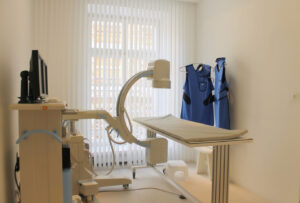 Munich, Germany Orthopedic Center of Professor Lill
Munich, Germany Orthopedic Center of Professor Lill -
 Seoul, South Korea Asan Medical Center
Seoul, South Korea Asan Medical Center -
 Jerusalem, Israel Hadassah Medical Center
Jerusalem, Israel Hadassah Medical Center -
 Petah Tikva, Israel Medical Center “Rabin”
Petah Tikva, Israel Medical Center “Rabin” -
 Istanbul, Turkey Medipol Mega University Hospital
Istanbul, Turkey Medipol Mega University Hospital -
 Istanbul, Turkey Istanbul Florence Nightingale Hospital
Istanbul, Turkey Istanbul Florence Nightingale Hospital -
 Geneva, Switzerland Hirslanden Clinique La Colline
Geneva, Switzerland Hirslanden Clinique La Colline -
 Geneva, Switzerland Generale-Beaulieu
Geneva, Switzerland Generale-Beaulieu -
 Istanbul, Turkey Acibadem Altunizade
Istanbul, Turkey Acibadem Altunizade -
 Istanbul, Turkey Medistate International Hospital
Istanbul, Turkey Medistate International Hospital -
 Istanbul, Turkey Acıbadem Ataşehir Clinic
Istanbul, Turkey Acıbadem Ataşehir Clinic -
 Antalya, Turkey Hospital Medical Park Antalya
Antalya, Turkey Hospital Medical Park Antalya -
 Dubai, UAE NMC Healthcare
Dubai, UAE NMC Healthcare -
 Istanbul, Turkey Hospital “Memorial Şişli”
Istanbul, Turkey Hospital “Memorial Şişli” -
 Milan, Italy “La Madonnina” clinic
Milan, Italy “La Madonnina” clinic -
 Milan, Italy San Donato Hospital in Milan, Italy
Milan, Italy San Donato Hospital in Milan, Italy -
 Milan, Italy San Raffaele University Hospital
Milan, Italy San Raffaele University Hospital -
 Lassnitzhöhe, Austria Lassnitzhöhe Private Clinic
Lassnitzhöhe, Austria Lassnitzhöhe Private Clinic -
 Graz, Austria Leech Private Hospital
Graz, Austria Leech Private Hospital -
 Abu Dhabi, UAE Burjeel Hospital Abu Dhabi
Abu Dhabi, UAE Burjeel Hospital Abu Dhabi -
 Vienna, Austria Debling Private Clinic
Vienna, Austria Debling Private Clinic -
 Dubai, UAE Burjeel Hospital
Dubai, UAE Burjeel Hospital -
 Heidelberg, Germany Heidelberg University Hospital
Heidelberg, Germany Heidelberg University Hospital -
 Hamburg, Germany Asklepios Nord Heidberg
Hamburg, Germany Asklepios Nord Heidberg -
 Winterthur, Switzerland Clinic "Lindberg"
Winterthur, Switzerland Clinic "Lindberg" -
 Istanbul, Turkey “Memorial Bahçelievler” Clinic
Istanbul, Turkey “Memorial Bahçelievler” Clinic -
 Incheon, South Korea Gil Medical Center at Gachon University
Incheon, South Korea Gil Medical Center at Gachon University -
 Lausanne, Switzerland Clinique Montchoisy
Lausanne, Switzerland Clinique Montchoisy -
 Nyon, Switzerland Clinique Genolier
Nyon, Switzerland Clinique Genolier -
 Istanbul, Turkey “Memorial Ataşehir” Clinic
Istanbul, Turkey “Memorial Ataşehir” Clinic -
 Antalya, Turkey Memorial Antalya Hastanesi
Antalya, Turkey Memorial Antalya Hastanesi -
 Bodrum, Turkey Acibadem Bodrum Hospital
Bodrum, Turkey Acibadem Bodrum Hospital -
 Barcelona, Spain QuironSalud Barcelona Hospital
Barcelona, Spain QuironSalud Barcelona Hospital -
 Barcelona, Spain Medical Center "Teknon"
Barcelona, Spain Medical Center "Teknon" -
 Barcelona, Spain University Hospital Barnaclinic+
Barcelona, Spain University Hospital Barnaclinic+ -
 Madrid, Spain University Clinic HM Madrid
Madrid, Spain University Clinic HM Madrid -
 Madrid, Spain University Hospital HM Monteprincipe
Madrid, Spain University Hospital HM Monteprincipe -
 Zurich, Switzerland Hirslanden Clinic
Zurich, Switzerland Hirslanden Clinic -
 Madrid, Spain Quiron Salud University Hospital
Madrid, Spain Quiron Salud University Hospital -
 Seoul, South Korea Samsung Medical Center
Seoul, South Korea Samsung Medical Center -
 Seoul, South Korea Medical Center at Ewha Womans University
Seoul, South Korea Medical Center at Ewha Womans University -
 SNUH
SNUH


